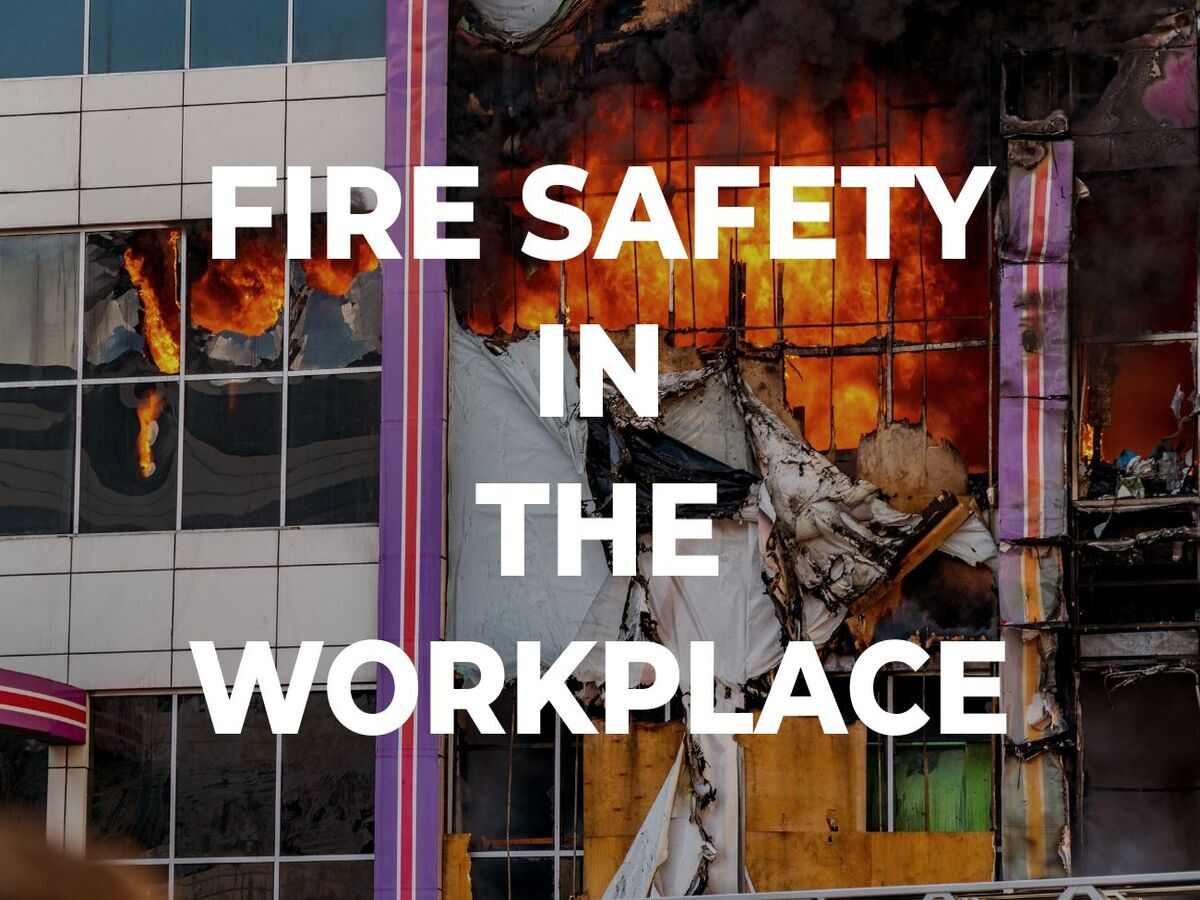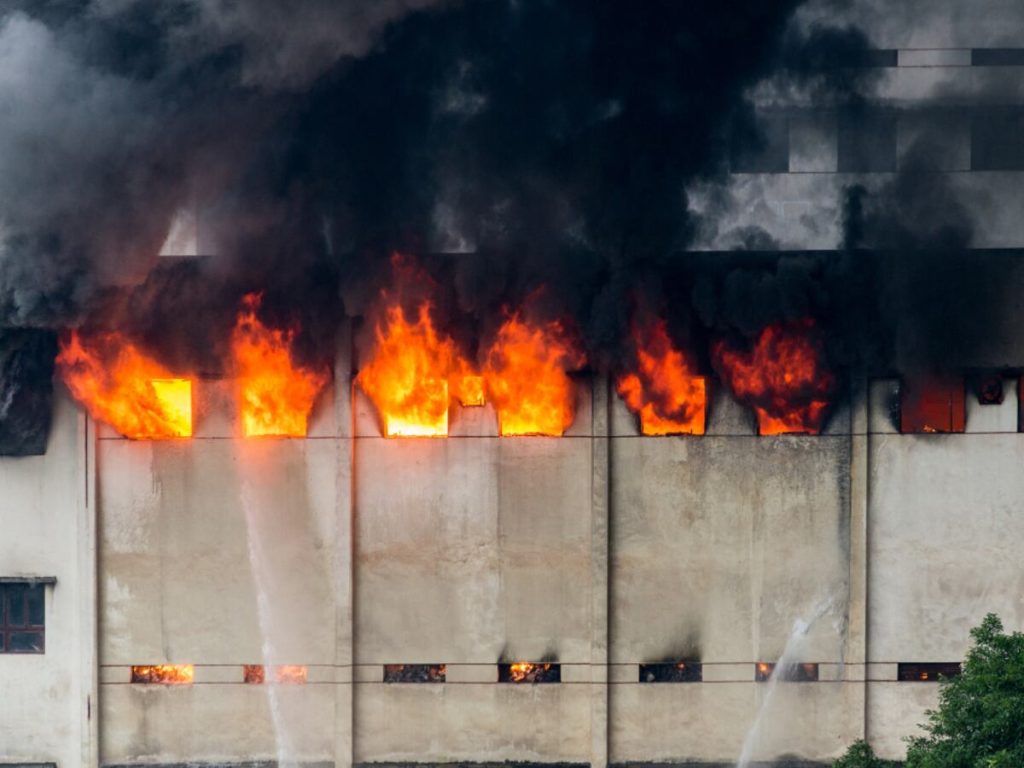Enhancing Fire Safety in the Workplace: Importance and Proven Strategies
Fire safety in the workplace is a topic that affects us all, and it’s something we can’t afford to overlook. It’s not about following rules and regulations; it’s about protecting people, property, and the very heart of your business.
No one wants to imagine the worst-case scenario, but workplace fires can happen when we least expect them. They can bring devastating consequences, both human lives and economic losses.
That’s why it’s crucial for all of us, whether business owners, managers, or employees, to understand the significance of fire safety and take proactive steps to prevent, prepare, and respond to fire emergencies.
So, let’s dive into the world of fire safety, discuss why it’s vital, and learn about some practical strategies that can help us enhance fire safety in the workplace. By the end of this article, you’ll have the knowledge and tools to make your workplace a safer, more resilient space for everyone involved.
Five Key Reasons Why Fire Safety in the Workplace is Crucial
Fire safety in the workplace isn’t a matter of ticking off boxes; it’s a fundamental aspect of responsible business management. Here are five compelling reasons why prioritising fire safety is crucial:
Ensures Employee Safety in the Workplace
The safety and well-being of your employees are of paramount importance. In a fire, the chaos and danger it poses can be severe. Having a comprehensive fire safety plan in place means taking active steps to protect your workforce.
This not only reflects your commitment to their safety but also fosters a sense of security and trust among your employees. When employees feel safe, they are more likely to be productive and loyal, which benefits the work environment.
Legal Compliance Requirements
Many regions have stringent fire safety regulations and standards in place for businesses. Ignoring or failing to follow these requirements can lead to severe consequences, including hefty fines, legal actions, or even the closure of your business.
Ensuring that your workplace meets all necessary fire safety standards is not a legal obligation; it’s an ethical responsibility demonstrating your commitment to operating a safe and responsible business.
Safeguarding Assets
Your workplace likely houses valuable assets, from equipment and inventory to important documents. In the unfortunate event of a fire, these assets could be at significant risk.
Implementing fire safety measures, such as fire alarms, fire sprinkler systems, and proper storage practices, can safeguard your investments and prevent costly losses. Protecting your assets is not only a matter of financial prudence but also a means of ensuring business continuity.
Reducing Emergency Response Times
Fire safety measures go beyond prevention; they also focus on response. Implementing measures such as regular fire drills and ensuring the availability of a well-maintained fire extinguisher and other safety equipment can reduce emergency response times. When a fire breaks out, every second counts.
Swift and efficient action during the early stages of a fire can prevent it from escalating, minimising both damage and danger. Your preparedness can make a significant difference in the outcome of a fire emergency.
Enhancing Productivity and Profitability
Effective fire safety guidelines and measures can improve the workplace environment, boosting morale and productivity. When employees feel safe and secure in their surroundings, they are more likely to be engaged, focused, and efficient.
Additionally, preventing fires and minimising their impact can save your business from potential financial ruin. Fires can result in not only immediate losses but also long-term damage to your reputation. Ensuring the safety of your employees and assets can protect your profitability and the future of your business.
Fire Prevention Strategies for Improving Fire Safety in the Workplace
In any workplace, safeguarding against the threat of fire is not a good practice; it’s an essential responsibility. To enhance fire safety and prevent potential disasters, it’s crucial to put in place effective fire prevention strategies.
Create a Fire Evacuation Plan
A well-thought-out fire evacuation plan is the backbone of workplace fire safety. It provides a clear roadmap for employees to follow in a fire emergency. Your plan should include designated evacuation routes, assembly points, and a clear chain of command.
Regular drills and communication of the plan are essential to ensure everyone knows what to do in case of a fire. An effective evacuation plan can mean chaos and a safe, orderly evacuation.
Conduct Fire Safety Training for Employees
Proper training is the cornerstone of a fire-safe workplace. Employees should be educated about fire risks and fire risk assessment, how to use portable fire extinguishers, and what to do in a fire.
Regular training sessions can increase awareness and preparedness, empowering employees to take swift and effective action when needed. Additionally, employees should be aware of the location of fire protection equipment and emergency exits.
Ensure Consistent and Timely Maintenance of Fire Protection System
Fire protection systems, such as fire alarms, smoke alarms, sprinklers, and extinguishers, are your first defence against fires. Regular inspections, maintenance, and testing of these systems are crucial.
They should be in perfect working order at all times. Investing in a maintenance schedule and adhering to it can prevent system failures during a fire and save lives.
Maintain Clean Environment
Cluttered and disorganised workspaces can pose a significant fire risk. Flammable materials, such as paper, chemicals, or unattended electrical equipment, can increase the likelihood of a fire.
Regular cleaning and organisation of the workplace can help mitigate these risks. Keeping fire exits clear and free from obstructions, ensuring a swift and safe evacuation during emergencies.
Designated Smoking Zone
Smoking is common fire hazards present in workplaces. If your workplace permits smoking, it’s essential to choose specific smoking areas and provide safe receptacles for cigarette butts.
These areas should be located away from flammable materials and equipped with proper fire safety procedures and measures, such as sand or water buckets. Ensuring that employees adhere to these designated areas can cut the risk of fire incidents.
Conclusion
In the dynamic world of workplaces, fire safety is a non-negotiable aspect that deserves our utmost attention. The five fire prevention strategies explored in this article provide a solid foundation for a safer and more secure work environment.
From creating a comprehensive evacuation plan to conducting regular fire safety training, ensuring consistent maintenance of fire protection systems, maintaining a clean and organised workspace, and designating smoking zones, each strategy plays a vital role in reducing fire risks and protecting lives and assets.
Fire safety is not a one-time effort; it’s an ongoing commitment. By integrating these strategies into your workplace culture, you can create a resilient, prepared, and safe environment for all.
But what’s important is partnering with the right fire safety program. VIC Engineering is here to help you take your fire safety measures to the next level.
Our cutting-edge fire protection systems, expert advice, and dedicated support can ensure that your workplace is equipped to handle fire emergencies with the highest level of efficiency and safety.
Are you ready to bolster your workplace’s fire safety measures and protect what matters most?
Contact VIC Engineering today and let us provide you with the best fire safety solutions tailored to your needs.
Don’t wait until it’s too late – safeguard your workplace, employees, and investments with VIC Engineering. Your safety is our priority. Visit our website or call us to get started on enhanced fire safety.



